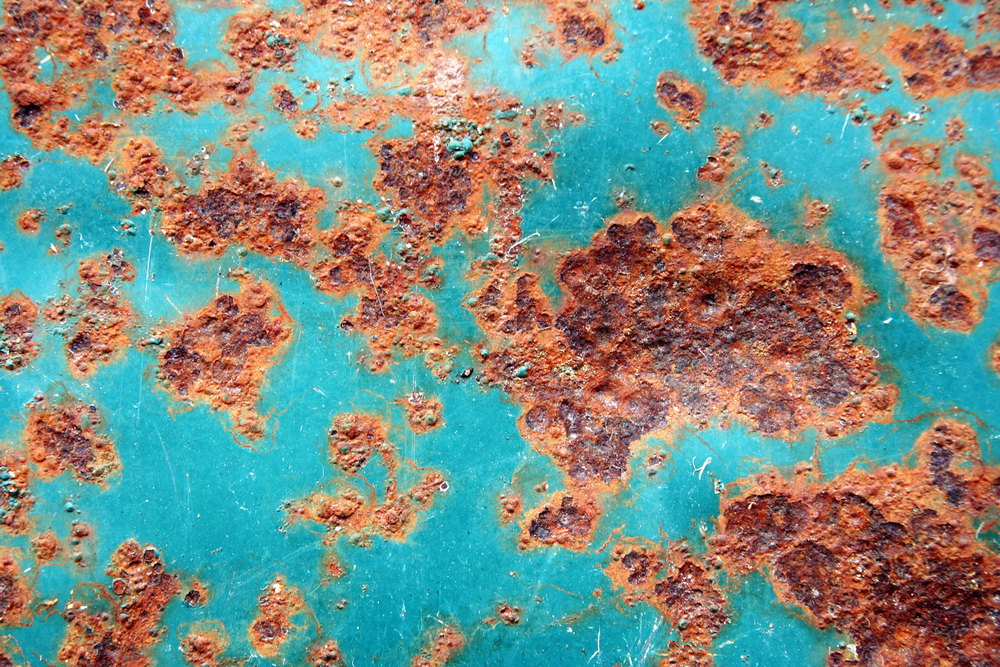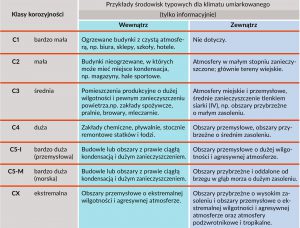
Corrosion classes according to PN-EN ISO 12944-2:2018-02
The standard specifies corrosion classes divided into internal and external environments. The indicated parameters and classes are helpful in selecting the appropriate painting system based on the required resistance and durability of the coating.

Information on determining the corrosion class for products made of aluminum sheets
The standard applies only to steel and defines corrosive environments based on corrosion losses over a specified period of time. There is no equivalent of this standard for aluminum sheet.
The resistance of a painting system to a specific class of environmental corrosivity is determined based on the time the sample withstood in a neutral salt chamber (NSS).
The NSS test is too mild for aluminum, so aluminum samples are tested in an acidic salt chamber (AASS). The test results for steel in NSS and aluminum in AASS are incomparable, therefore it is impossible to assign aluminum products to steel corrosion classes.
Information on determining the corrosion class for stainless and acid-resistant steel products
The classification of stainless steels for use in a given corrosive environment should be based on the PN-EN 10088-1-5 standard, which describes the grades of corrosion-resistant stainless steels, and on the basis of the characteristic properties of these steels. As a rule, it should be assumed that if chloride ions are present in high concentrations in the product’s operating environment, an acid-resistant product 1.4404 (AISI 316L) should be selected. It should also be remembered that regular maintenance of the surface of the elements also contributes to achieving high corrosion resistance.
The product is made of stainless steel 1.4301 (AISI 304) or acid-resistant steel 1.4404 (AISI 316L), as a rule, it is not painted. It is possible to paint such products, but it requires special preparation and is not recommended due to cutting off access to oxygen, which worsens the corrosion resistance of these steels.


 en
en  PL
PL  DE
DE  LT
LT  SV
SV  FR
FR  ES
ES  HU
HU  NO
NO  DK
DK  FI
FI  RU
RU 